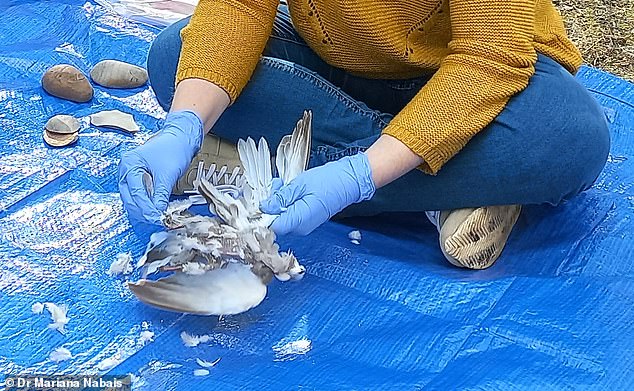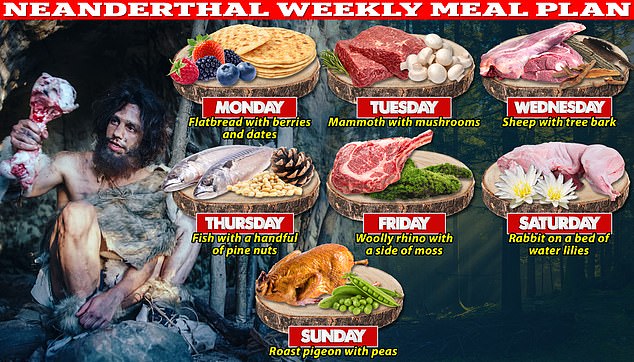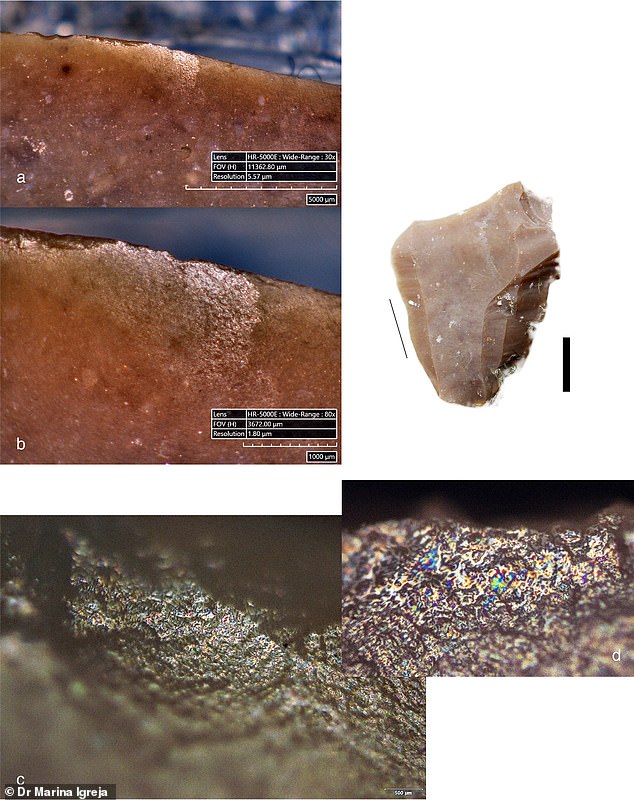The First Sunday Roasts? Neanderthals Were ‘Advanced Cooks’ Who Could Roast Small Birds for Dinner, Study Claims
There’s nothing quite like a Sunday dinner.
And it turns out that this practice has been around for tens of thousands of years, as evidence suggests that Neanderthals roasted small birds for dinner.
Previous research has shown that our closest human ancestors hunted large game such as mammoths and rhinoceroses for their meat.
However, more recent studies show that they also captured and slaughtered small birds.
Because these smaller objects leave little archaeological trace, experts set out to prepare food in the way that Neanderthals did, including attempting to replicate how they might have cut up and cooked the birds.
There’s nothing quite as comforting as sitting down to a Sunday roast. And it turns out the habit has been around for tens of thousands of years – with evidence suggesting Neanderthals roasted small birds for dinner

Experts set to work preparing food in the way Neanderthals would have done – including a replica of how they may have cut up and cooked the birds
Researchers from the Catalan Institute of Human Paleoecology and Social Evolution collected five wild birds that had died of natural causes in Portugal.
They chose two carrion crows, two collared doves and a wood pigeon, which resemble species that Neanderthals ate.
They chose their cooking methods based on archaeological evidence and previous studies of Neanderthal society.
All birds were plucked by hand and the black crow and the collared dove were then slaughtered raw using a flint shard.
These are small, sharp pieces of stone that are struck from a larger core and have been used as cutting tools throughout history.
The remaining three birds were roasted over hot coals until cooked and then slaughtered. The scientists found that this was much easier than cutting up the birds while they were raw.
Lead researcher Dr Mariana Nabais said: ‘Using a flint fragment for butchery required great precision and effort, which we had not fully appreciated before this experiment.
‘The flakes were sharper than we initially thought. We had to handle them carefully to make accurate cuts without hurting our fingers.
‘These hands-on experiments highlighted the practical challenges associated with Neanderthal food processing and cooking, and provided a tangible link to their daily lives and survival strategies.’

Neanderthals were ‘advanced cooks’ who could roast small birds for dinner, study claims

Analysis of the flint shard and the remaining bones from the carcasses revealed that the cuts used to butcher the raw birds left similar marks to those on birds found at archaeological sites.
Analysis of the flint shard and the remaining bones from the carcasses revealed that the cuts used to butcher the raw birds left similar marks to those left on birds found at archaeological sites.
However, since the bones of the roasted birds were more brittle, their greater fragility could mean that there is no evidence that has stood the test of time. That would indicate that there are also roasted birds.
“To roast the birds over the coals, the temperature had to be kept constant and the cooking time had to be carefully monitored to avoid overcooking the meat,” said Dr. Nabais.
‘Perhaps the roasting went much faster than we expected because we removed the feathers from the birds before cooking them.
‘We actually spent more time preparing the coals than cooking it, which took less than 10 minutes.’

All birds were hand-plucked and the carrion crow and the collared dove were then slaughtered raw using a flint flake mould.
The research team believes the study should be expanded to gain a better understanding of the Neanderthal diet, and to investigate more types of small prey.
Dr Nabais added: ‘The sample size is relatively small, consisting of only five bird specimens. This may not be a full representation of the diversity of bird species that Neanderthals may have used.
‘Second, the experimental conditions, although carefully controlled, cannot fully mimic the exact environmental and cultural contexts of Neanderthal life.’
Previous studies have shown that Neanderthals – who lived between about 130,000 and 40,000 years ago – also ate nuts, fruits, mushrooms, crabs, fish, sheep, reindeer, bison, mammoths, rabbits and woolly rhinoceroses.
In 2022, experts even discovered the world’s oldest flatbread in a Neanderthal cave, which is 70,000 years old.
The new research was published in the journal Frontiers in Environmental Archaeology.

